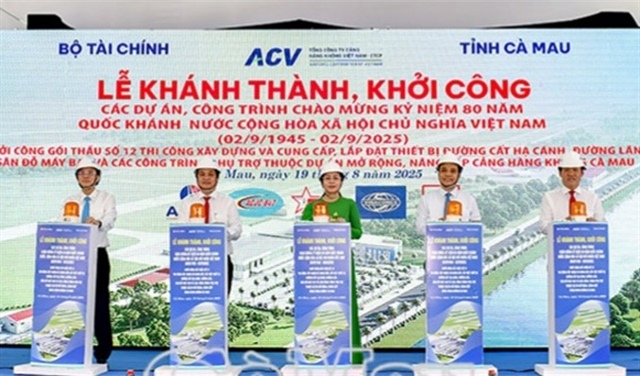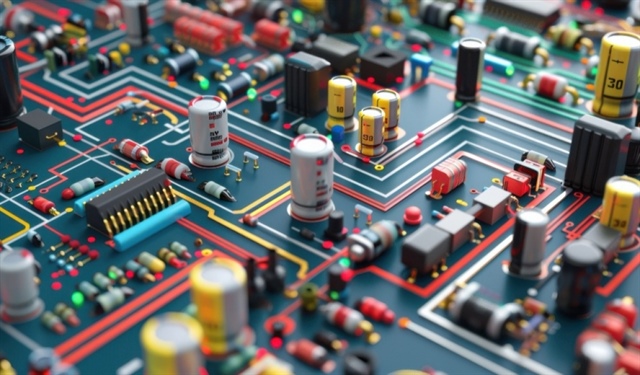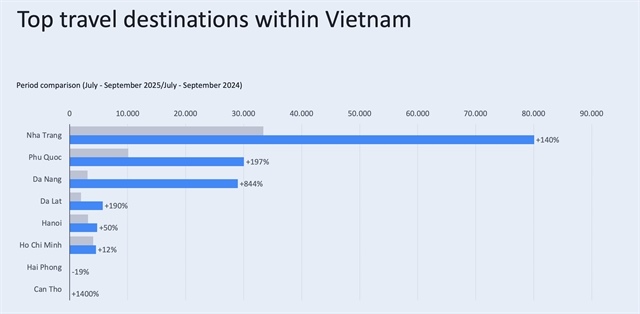US investment flow into Vietnam opens up new opportunities
US investment flow into Vietnam opens up new opportunities
Capital flow from the US is expected to open up a new chapter in investment co-operation with Viet Nam, according to Dau tu (Vietnam Investment Review) newspaper.

Ahead of Prime Minister Nguyen Xuan Phuc’s visit to the US from May 29-31, Jabil Circuit Inc., a major American technology corporation, had commenced the construction of a new manufacturing workshop at the Saigon Hi-tech Park (SHTP).
Jabil started operation at the SHTP from September 2007, specialising in the production of electronics and equipment for information technology and telecommunication with an initial capital of only US$30 million. However, in 2011, the corporation decided to increase investment to $100 million.
In 2015, Jabil once again announced that it would expand investment in Viet Nam, focusing on the field of high technology.
“Since we began operations in Viet Nam ten years ago, we have been on a consistent growth trajectory. We are currently operating at maximum capacity, and this expansion is central to our growth strategy. Besides positioning us well for future growth, it also reflects our continued commitment to develop and invest in Viet Nam,” said Vijay Chinnasami, senior vice president of electronic manufacturing services (EMS) operations at Jabil.
Jabil is among US investors to pledge long-term operations in Viet Nam. Other US big investment projects include the Ho Tram Strip, with a total registered capital of $4.2 billion being carried out in southern Ba Ria – Vung Tau province.
Minister of Planning and Investment Nguyen Chi Dung repeated big names like Intel, GE, Boeing, Coca-Cola, Nike, Microsoft, Citi Group, P&G and Mobil, while highlighting the significant contributions of US investors to the renewal, integration and economic development of Viet Nam.
As of May 20 this year, the US counted 838 investment projects worth over $10.2 billion in Viet Nam. The US ranks ninth among countries and territories investing in Viet Nam.
A series of US businesses like Nike, Adidas, Intel and Microchip plan to shift production to Viet Nam, while ExxonMobil – a major US oil and gas group – is preparing for the Blue Whale project to bring gas onshore, with a committed capital of nearly $10 billion.
At recent workshops on Viet Nam-US prospects in 2017 and beyond in Ha Noi and HCM City, a large number of US companies affirmed their plans to increase investment in Viet Nam.
“We are working to find concrete ways to strengthen the bilateral trading relationships, including the possibility of a bilateral free trade agreement, in order to support economic growth in both countries,” said Tami Overby, senior vice president for Asia of the US Chamber of Commerce (Amcham).
Meanwhile, AmCham Executive Director Adam Sitkoff expressed his confidence in the upward growth trend of trade and investment relations between Vietnam and the US.
“AmCham supports a path towards a US-Viet Nam free trade agreement, which would help increase bilateral trade and investment, and which would create wealth and job opportunities for people in both countries,” he said.
Minister Dung said the ongoing visit to the US by Prime Minister Phuc held a significant meaning to elevate the bilateral comprehensive partnership to a new height.
"This is an excellent opportunity for Vietnam to boost trade and investment relations with the US", he said, adding that 80-90 Vietnamese businesses are accompanying the PM to seek new cooperation agreements.
The two countries’ leaders are scheduled to hold talks to discuss measures to promote the bilateral comprehensive partnership, especially in the fields of politics, external affairs, economics and trade.
Vice President of AmCham Michael Kelly told Dau tu (Investment) reporters that the US business community was much awaiting the PM’s visit.
“My experiences suggest that the Vietnamese Government is committed to implementing reforms and supporting American and Vietnamese business operations. I have received reassurances that there would be a level playing field for US investments in Viet Nam as part of a mutually beneficial trade relationship.”




















